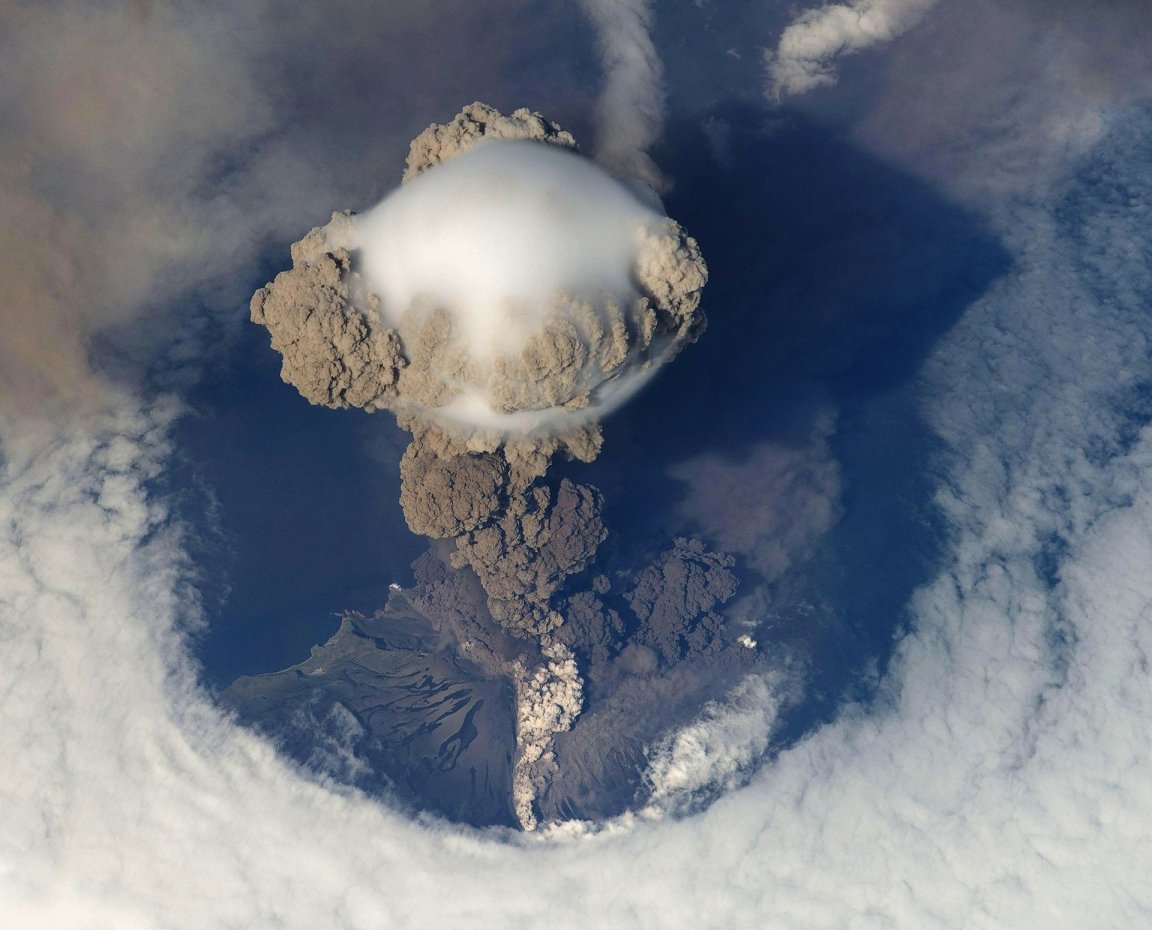
Worth the Risk?
Two new studies have been published in Science outlining research on a pair of geoengineering methods, sulphur atmospheric injection and cirrus cloud modification, that could prove helpful if Earth’s climate reaches catastrophic levels. While the researchers behind these studies hope that the methods will never become necessary, they assert that researching them is important just in case a climate red button is ever needed.
The first method would involve attempting to mimic the effects of volcanic eruptions. Using dispersal planes, we would inject enough sulphur into the atmosphere to deflect a significant amount of solar radiation away from Earth, thus decreasing its surface temperature.
The second method is to modify cirrus clouds. These clouds are adept at trapping heat in the atmosphere, having a similar effects on the planet as greenhouse gases. The proposed geoengineering method would be to “seed” these clouds with tiny particles of chemicals, desert dust, or pollen in order to break them apart and let more heat escape.

Injecting sulfur into the atmosphere is a highly risky proposition. Financially, it could cost $20 billion a year for as many at 160 years. It could also potentially lead to the destruction of the ozone, which would have the domino effect of causing worldwide draughts while not decreasing acid levels in the ocean or carbon dioxide levels in the air.
Cloud seeing also comes with risks. If the seeding isn’t perfectly executed, it could lead to further cirrus cloud formation, which would have the counterintuitive effect of trapping more heat. It also wouldn’t decrease CO2 levels in the air or stop ocean acidification.
As Kate Marvel, a climate scientist at NASA and Columbia University, said in a Ted Talk, ultimately, geoengineering is like “going to a doctor who says ‘You have a fever, I know exactly why you have a fever, and we’re not going to treat that. We’re going to give you ibuprofen, and also your nose is going to fall off.'” They’re simply risky, temporary solutions that don’t address the core problem.
The Core Problem
We’re seeing more and more evidence that the climate is heading toward disaster and that humans are driving the change. Over the last decade or so, the general tone concerning the topic has moved from “we should do something” to “we must do something now to avoid planetary collapse.”
A team lead by Jim Hansen, NASA’s former chief of climate science, made the situation clear in a recently published study: “The world has already overshot appropriate targets for greenhouse gas amount and global temperature, and we thus infer an urgent need for rapid phasedown of fossil fuel emissions.”
2017 is already on track to be one of the hottest and wettest years on record for the United States, and numerous other countries have seen similar trends. While it may be simplistic, Elon Musk is right in his tweeted assertion that there’s “no need to rely on scientists for global warming — just use a thermometer.”
Measures such as the Paris Agreement can only help our planet, but many have argued that the fundamental problem with the mandate is that the global temperature increase probably won’t be limited to 2 degrees Celsius (3.6 degrees Fahrenheit) even if the goals are met.
However, some climate scientists remain optimistic that the environmental crucible we are facing is going to force change before we have resort to geoengineering. Alan Robock, an environmental science professor at Rutgers, told Business Insider that international agreements could be made necessarily more severe if the right person is leading the campaign: “With charismatic leadership, things can change very quickly […] I’m optimistic the world will do that and we won’t need to use geoengineering.”